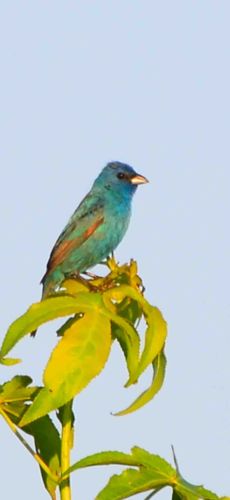Indigo Bunting (Passerina cyanea)
Classification: Passeriformes (Order) Cardinalidae (Family)

Brief Description
The Indigo Bunting is a small, migratory sparrow known for the male's striking blue plumage during the breeding season. Females are typically brown with streaky underparts. They are often found in brushy areas and open woodlands, and are recognized by their cheerful, high-pitched song.
Additional Information
- Region of Origin: Eastern and Central North America (breeding grounds); Southern Florida, Mexico, Central America, and the Caribbean (wintering grounds)
- Typical Sighting Period: Breeding season: May to July; Migration: April-May (spring) and September-October (fall)
- Plumage Details: Adult males are an iridescent deep blue all over, which can appear black in poor light or purple-green in certain lighting conditions due to structural coloration rather than pigment. They have blackish wings and tails with blue edging. Non-breeding males and females are largely brown, with the female displaying faint streaking on the breast and often having a bluish tinge on the wings and tail.
- Ecological Significance: Indigo Buntings primarily feed on insects and seeds, playing a role in pest control and seed dispersal. They are also a food source for larger predators, contributing to the food web dynamics of their habitats.
- Conservation Status: Least Concern
- Observation Tips: Look for Indigo Buntings in brushy fields, forest edges, and along roadsides. Listen for the male's distinctive, high-pitched song, often sung from a prominent perch. Early mornings are best for observation, especially during breeding season (May-July).